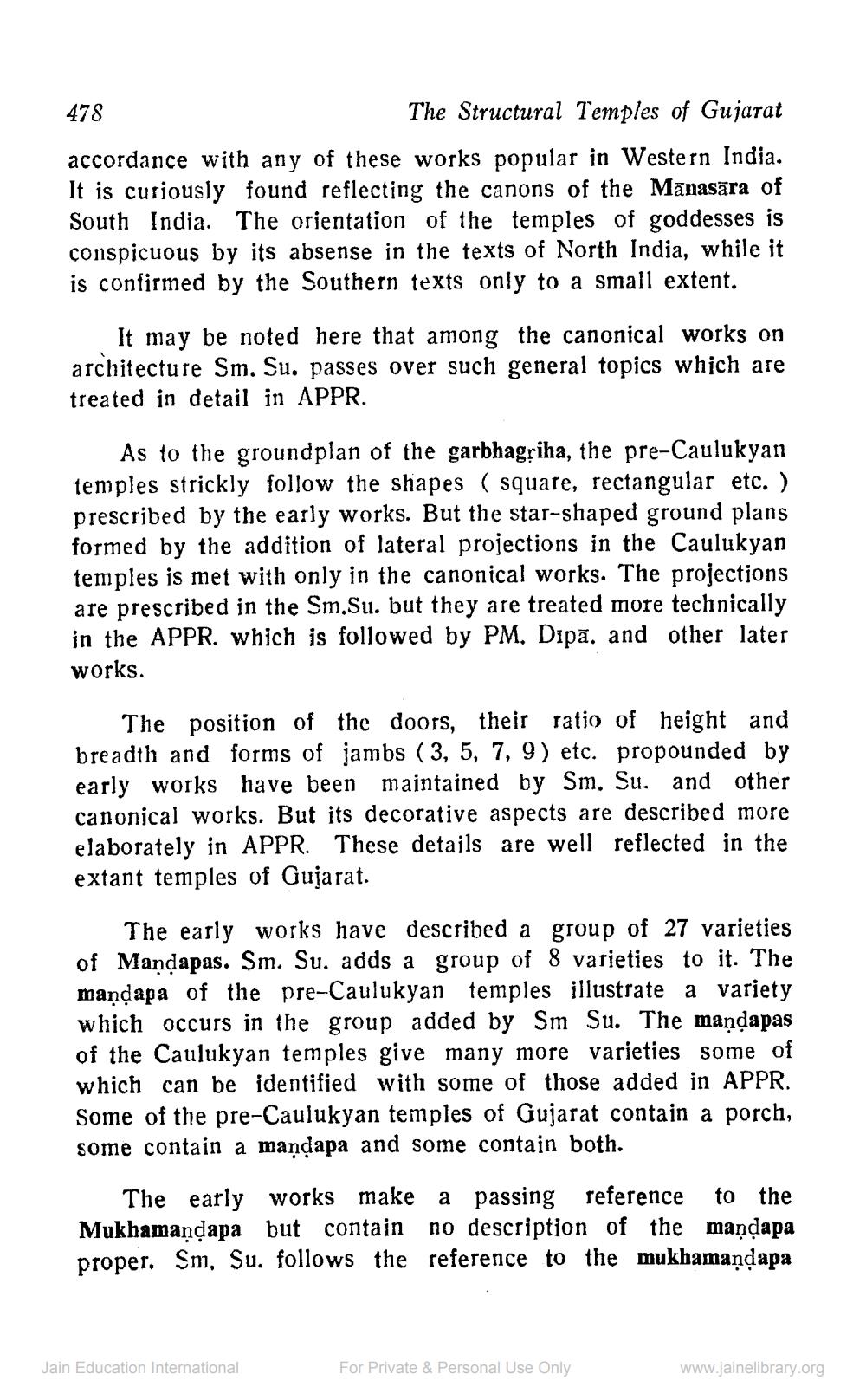________________
478
The Structural Temples of Gujarat accordance with any of these works popular in Western India. It is curiously found reflecting the canons of the Mānasāra of South India. The orientation of the temples of goddesses is conspicuous by its absense in the texts of North India, while it is confirmed by the Southern texts only to a small extent.
It may be noted here that among the canonical works on architecture Sm. Su. passes over such general topics which are treated in detail in APPR.
As to the groundplan of the garbhagriha, the pre-Caulukyan temples strickly follow the shapes (square, rectangular etc. ) prescribed by the early works. But the star-shaped ground plans formed by the addition of lateral projections in the Caulukyan temples is met with only in the canonical works. The projections are prescribed in the Sm.Su. but they are treated more technically in the APPR. which is followed by PM. Dipā. and other later works.
The position of the doors, their ratio of height and breadth and forms of jambs (3, 5, 7, 9) etc. propounded by early works have been maintained by Sm. Su, and other canonical works. But its decorative aspects are described more elaborately in APPR. These details are well reflected in the extant temples of Gujarat.
The early works have described a group of 27 varieties of Mandapas. Sm. Su. adds a group of 8 varieties to it. The maņdapa of the pre-Caulukyan temples illustrate a variety which occurs in the group added by Sm Su. The maņdapas of the Caulukyan temples give many more varieties some of which can be identified with some of those added in APPR. Some of the pre-Caulukyan temples of Gujarat contain a porch, some contain a manďapa and some contain both.
The early works make a passing reference to the Mukhamaņdapa but contain no description of the maņdapa proper. Sm, Su. follows the reference to the mukhamaņdapa
Jain Education International
For Private & Personal Use Only
www.jainelibrary.org




